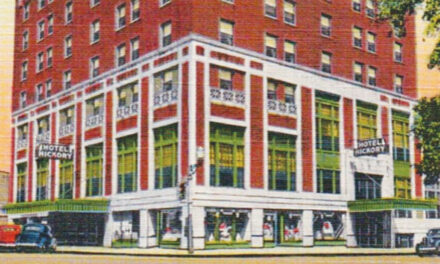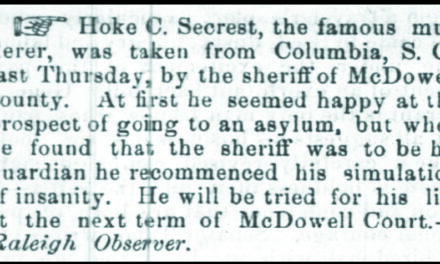
Long before industry came to western North Carolina, a one-person operation churned out product that made the region famous. Her name was Sally Michael and she crafted smoking pipes.
Sally lived down around the South Mountains in Burke County and found her raw material along the banks of Silver Creek. Using kaolin clay, it was said that a Sally Michael pipe “gave smokers an extra amount of pleasure.” It was no wonder her pipes became famous.
The price might have helped, too. Every Saturday, she rode a blind horse into Morganton and offered up to 200 of her pipes for sale at the going rate of 25 cents per dozen, which when adjusted to her era, still comes out to less than a dollar per pipe in 2024, a seriously good deal.
A Sally Michael pipe was made from a soapstone mold, using a “ti ti” stem that included a twig to help draw the smoke. When the the Civil War came, NC soldiers marched off to service with bags of Sally’s pipes in there haversacks, selling them to comrades, even northern opponents, during those times of “off the record” exchanges between sides. Word of mouth sold the pipes to customers nationwide.

Photo: Burke County entrepreneur Sally Michael and an 1896 ad for her product. Her pipes were used by soldiers on both sides of the Civil War, and a lot of other people, too.
We tend to think of smoking tobacco as a predominantly male activity, but that was not the case. H.E.C. Bryant remembered “a sweet, old lady of character, ability, education, refinement and courage who smoked a Sally Michael.” Bryant, as a young mischievous boy swiped one of her pipes. When questioned, he lied but she knew by how his “countenance fell,” as he described the scene. The change of expression on his face gave him away. “She knew I was guilty, and proceeded to deliver a scorching lecture, worse than a whipping. She never let up until I placed the pleasure-giving engine in her wrinkled hands.”
Explaining that the grandmotherly woman had used that pipe for 15 years at the time of the incident, Bryant noted that “three times a day, just after each meal, that dear lady enjoyed a smoke.” Watching the woman light up, he witnessed how she “let the smoke curl up from her lips in an ecstasy of joy. She seemed contented and happy.”
Sally Michael painstakingly made her pipes at home, baking the molded clay in the fireplace of her two room log cabin. Though a small woman, she worked diligently, hauling the clay she dug from the creek bank home, kneading it into perfection for the mold, tending a hickory wood fire for a day and a half to harden the pipe, then personally filling orders, both in town and far away. After she died in the 1870s, the molds were passed down through the family. They continued to make Sally Michael pipes into the 1950s. Today, the molds can be seen at the Burke Museum of History in Morganton, where they are on display.
The secret to what made the smoking appliance so popular? The clay Sally used was some of the purest to be found. Plus, she worked hard to shape it, removing any impurities she found. Her pipes were not ornamental, “but something about it made users beg for it.” Smokers talked about how the bowl of the pipe could burn “at white heat without injury.”
American philosopher Ralph Waldo Emerson said that if someone makes a superior product, “you will find a hard-beaten road to his house.” In this case, the road led to the hills of Burke County and they led to “her” house, the home of Sally Michael.









